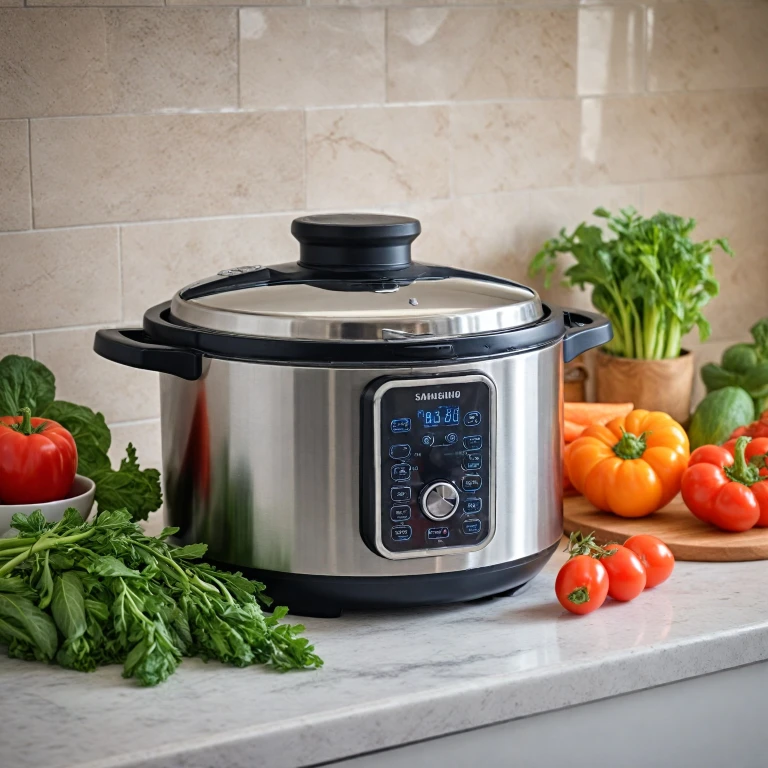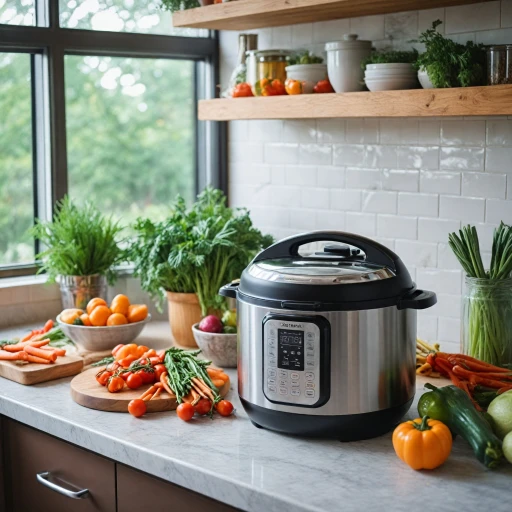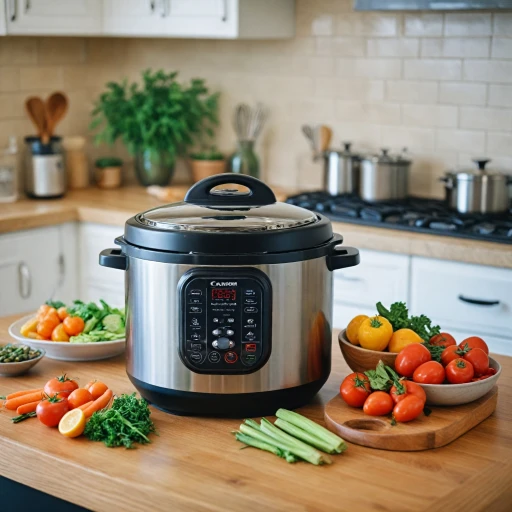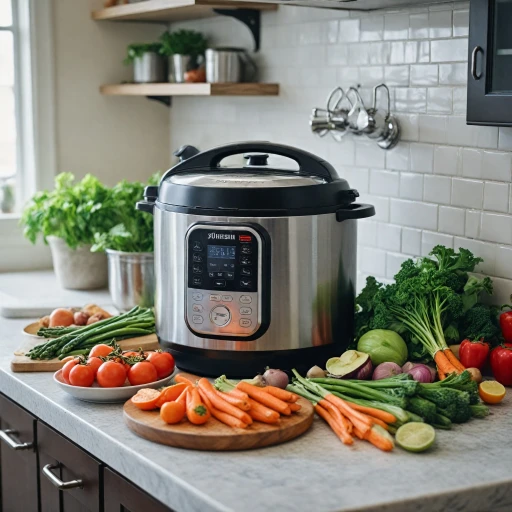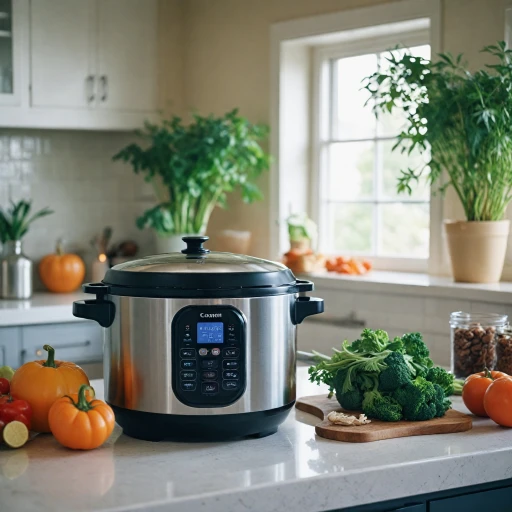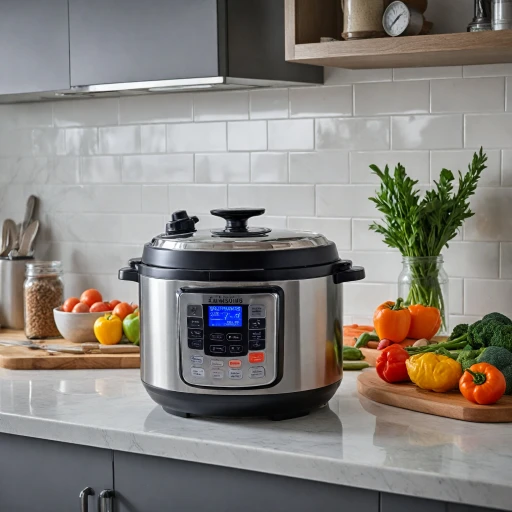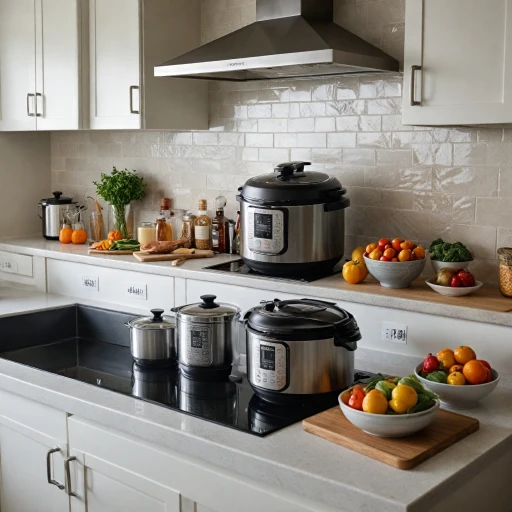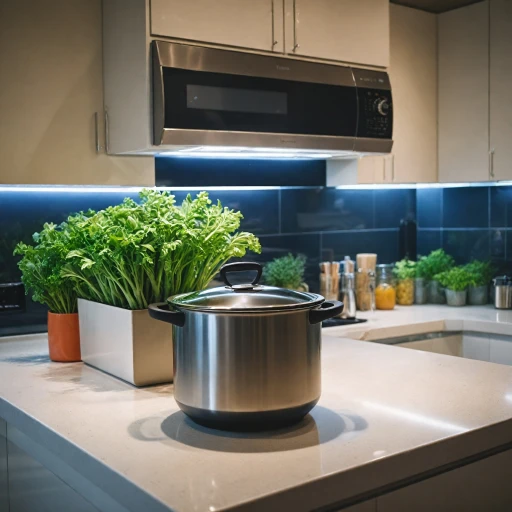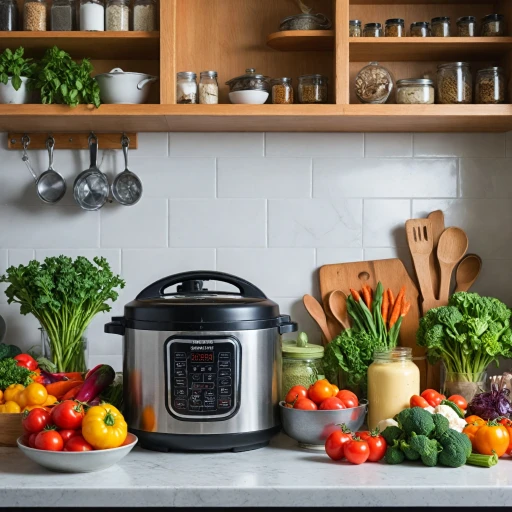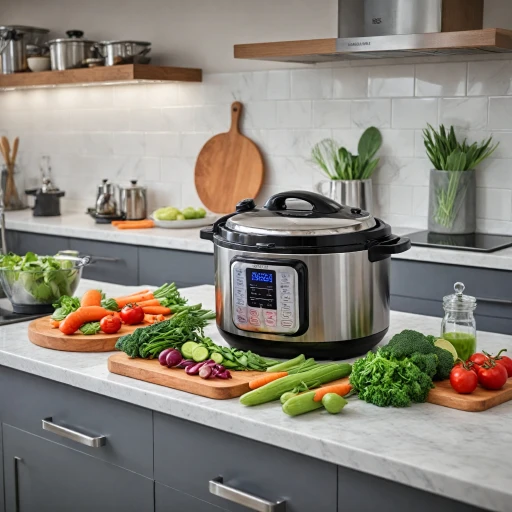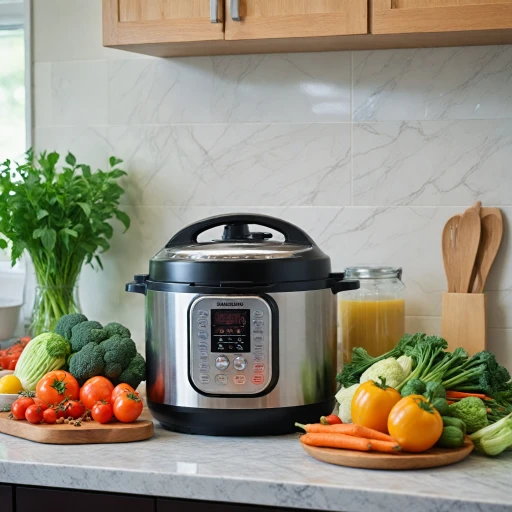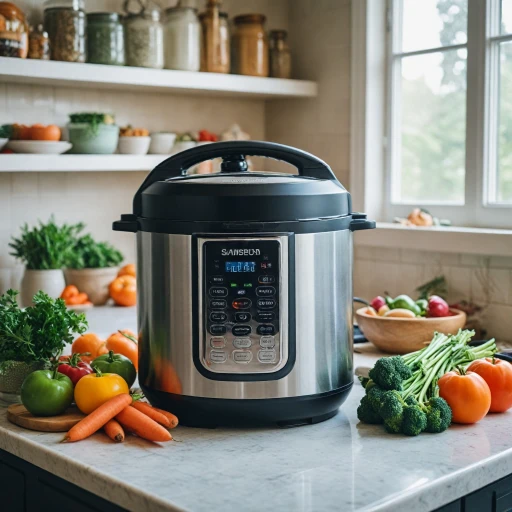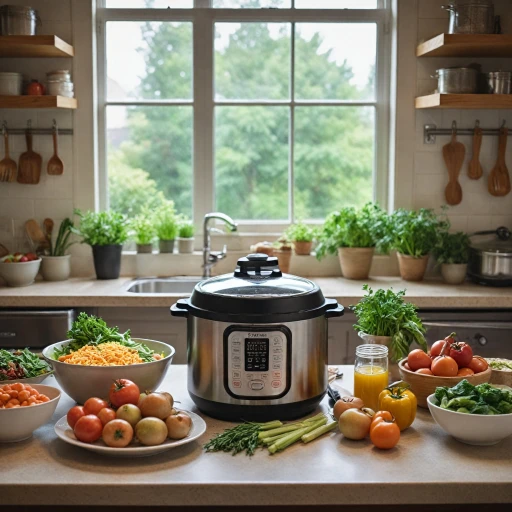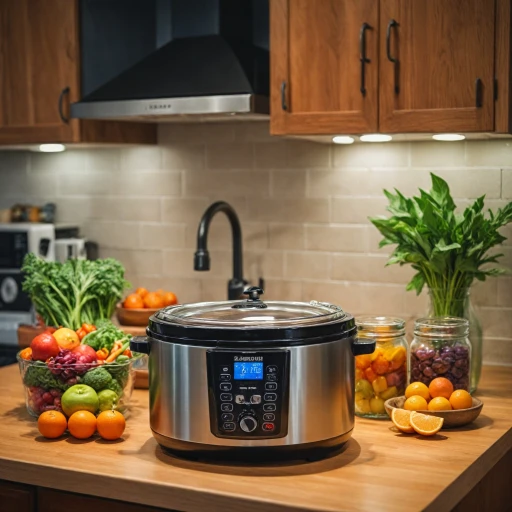
Understanding Electric Pressure Cookers
Exploring Electric Pressure Cookers
Electric pressure cookers have transformed the way we cook by providing a convenient and efficient method to prepare meals in a fraction of the time compared to traditional cooking methods. These appliances have gained popularity due to their multifunctionality, allowing users to steam, sauté, and pressure cook all with the push of a button. They are ideal for busy households and those looking to create delicious, nourishing meals with minimal effort. One significant aspect of electric pressure cookers is their ability to reduce cooking time without compromising on flavor or nutritional value.
When choosing an electric pressure cooker, several factors come into play, including the capacity. Pressure cookers are often measured in quarts or liters, with common sizes ranging from a compact 3-quart for smaller meals, to a more spacious 8-quart for larger families or batch cooking. The size of the cooker you need depends on the quantity you intend to prepare and store for later use.
Another vital component of electric pressure cookers is the material used in the cooking pot, which impacts the performance of the product. Stainless steel pots are favored for their durability and non-reactive properties, making them a superior choice over quart aluminum alternatives, which may not offer the same longevity or cooking quality. Additionally, stainless-steel pots are often dishwasher safe, adding convenience to your clean-up routine.
Cost is also an important consideration. The price range of electric pressure cookers can vary widely, from budget-friendly options to more high-end models. It's essential to look for features that justify the price, such as programmable settings, safety mechanisms, and the inclusion of accessories like a glass lid for regular cooking modes.
As with any kitchen appliance, it's beneficial to read product reviews before making a purchase. User experiences can provide insight into the pressure cooker's performance, reliability, and ease of use, guiding you toward a model that suits your cooking style and requirements.
Why Choose Stainless Steel?
The Superiority of Stainless Steel in Electric Pressure Cookers
Choosing the right material for your electric pressure cooker can significantly impact your cooking experience. Exploring the benefits and features of stainless steel reveals why it remains a top choice among cooks.
Stainless steel offers a durable and robust solution, ideal for regular use. Its composition provides a non-reactive surface, ensuring that your meals retain their natural flavors without any metallic taste—a common issue with materials like aluminum. Whether using a quart aluminum or a glass lid, stainless steel prevents unwanted chemical interactions, making it a preferred product for many home chefs.
Additionally, stainless steel doesn’t dent or scratch as easily as other materials, keeping your pressure cooker looking like new for years. When considering a stainless steel pressure cooker, reviews often highlight its long life and durability. For those exploring cooking time and efficiency, the heat conduction properties of this material ensure even cooking, reducing overall cooking time and making it a valuable addition to any kitchen.
Investing in a stainless steel model may involve a different price point. However, the longevity and performance benefits typically outweigh this initial cost. You’ll find that many reputable brands, such as Prestige, offer a variety of models at different sale price ranges, making it possible to purchase a quality cooker without exceeding your budget.
In conclusion, for effective pressure cooking, stainless steel is the material of choice. Opt for a pressure cooker that combines efficiency, durability, and cost-effectiveness to enhance your culinary adventures.
Comparing Stainless Steel to Other Materials
Comparison of Stainless Steel with Other Materials in Pressure Cookers
When selecting a pressure cooker, one critical aspect to consider is the material from which it is constructed. Stainless steel cookers often vie against other options such as aluminum, each offering a balance of benefits and drawbacks.- Durability and Longevity: Stainless steel pressure cookers are known for their robust build. Unlike aluminum, which can warp over time, stainless steel is less prone to deforming under high pressures. This makes it a frequent choice for those looking for long-lasting cookware.
- Health and Safety: Concerned about your family's health? Stainless steel offers a non-reactive cooking surface, meaning it won't interact with acidic or salty foods. In contrast, aluminum cookers may leach metal into the food, especially those not anodized.
- Heat Conductivity: Aluminum has an edge when it comes to heat conductivity. It can heat up quickly, which can be advantageous for quick pressure cooking. However, stainless steel’s heavy gauge retains heat better, offering more controlled cooking times.
- Maintenance and Care: A stainless steel cooker is relatively easy to maintain. It won't stain or catch lingering odors like some non-stainless materials can. Although it might not have the same even heating distribution as aluminum, the ease of maintaining that shiny, new appearance is often worth the trade-off.
Safety Features in Modern Electric Pressure Cookers
Key Safety Attributes in Current Electric Pressure Cookers
Modern electric pressure cookers are designed with user safety in mind, making them a reliable tool in any kitchen. Understanding the safety features integrated into these appliances can ease concerns relating to pressure cooking and enhance cooking confidence.
- Secure Locking Mechanisms: One of the primary safety features is a secure locking system. The stainless steel lid must be properly aligned and locked in place before pressure is built. This prevents accidental opening while under pressure, a crucial aspect for safe use.
- Pressure Release Valve: This allows for the controlled release of pressure, reducing the risk of burns or accidents. In stainless steel models, this typically involves easy-to-use buttons or switches that let you safely vent steam.
- Automatic Safety Controls: Many electric pressure cookers come equipped with sensors that monitor pressure and temperature. These automatic features help maintain the appropriate cooking environment and prevent overheating or excess pressure build-up.
- Durable Stainless Steel Construction: As noted in our discussion on the benefits of stainless steel, using this material not only improves durability but enhances safety by resisting high temperatures and pressures.
For those considering a purchase, favorable reviews often highlight the safety features as significant selling points. Whether a 6-quart or quart aluminum pressure cooker, ensuring these safety measures are in place can make a substantial difference in your cooking experience. These reliable features are typically included regardless of the price, from regular to special sale price ranges.
With these built-in protections, the electric pressure cookers, including models from reputable brands like Prestige, offer both efficiency and peace of mind during your culinary adventures. Safety should indeed be a top priority when selecting a cooker from an extensive product list, so ensure these critical features are available on your preferred model.
Cooking Tips and Tricks
Making the Most of Your Electric Pressure Cooker
Electric pressure cookers have transformed the kitchen experience with their versatility and efficiency. To optimize cooking with your stainless steel model, consider these tips:- Meal Preparation: Before starting, gather all your ingredients. Pre-measured spices and chopped vegetables can reduce overall cooking time by minimizing interruptions.
- Liquid Requirement: Always ensure there's enough liquid in the pot. Pressure cookers need a minimum amount to create the steam essential for the cooking process. Typically, one to two cups of water or broth are sufficient for most recipes.
- Avoid Overfilling: For optimal performance, do not fill the cooker above two-thirds of its capacity. When cooking foods that expand or foam, like grains or beans, aim for half-full to prevent clogging the pressure release valve.
- Lock the Lid Properly: Follow the manufacturer's instructions to securely fasten the lid. This not only ensures safety but also aids in reaching the desired pressure level more efficiently.
- Adjust Cooking Times: Pressure cooking reduces the required cooking time by up to 70%. However, factors like the amount of food, its density, and the altitude can influence timings. Adjust based on your individual needs and the cooker’s performance.
- Release Pressure Safely: Familiarize yourself with both natural and quick pressure release methods. A natural release, letting the cooker sit till the pressure drops, is ideal for meats, while a quick release, using the valve to expel steam, suits vegetables to prevent overcooking.
- Experiment with Recipes: Electric pressure cookers, especially those with stainless steel pots, offer consistent heating. Try diverse recipes: stews, desserts, and even homemade yogurt, taking advantage of the multi-functionality that modern models provide.
Choosing the Right Stainless Steel Pressure Cooker for You
Finding the Perfect Fit for Your Needs
Selecting the right stainless steel pressure cooker can be a game-changer in your kitchen routine. The market offers a variety of options to suit different preferences, from small to large capacities, accommodating both home cooks and more demanding culinary enthusiasts.
Consider the following factors to guide your decision:
- Capacity: Pressure cookers come in various sizes, typically ranging from 4 quarts to over 8 quarts. A 6-quart cooker is versatile for regular family meals, while an 8-quart option suits larger gatherings or batch cooking.
- Material: Stainless steel pressure cookers are an excellent choice due to their durability and ability to resist staining and odors, unlike aluminum pressure pans. They offer superior performance for pressure cooking over their lifespan.
- Price Points: Price can be an influential factor. While regular prices for these cookers usually reflect their quality, lookout for sale prices or special price offers to add a premium model to your kitchen without breaking the bank.
- Features: Safety is crucial. Opt for models with secure lid locking systems and multiple pressure settings. Advanced features like a glass lid for regular cooking functions can add functionality.
- Reviews: Reviews can offer valuable insights into product performance and customer satisfaction that regular price tags alone can't reflect.
Taking time to compare these aspects ensures you make an informed choice, optimizing your cooking time and enhancing your culinary repertoire. Whether you’re looking for a modest model or a prestige option, your ideal stainless steel pressure cooker awaits on that add-to-list!
